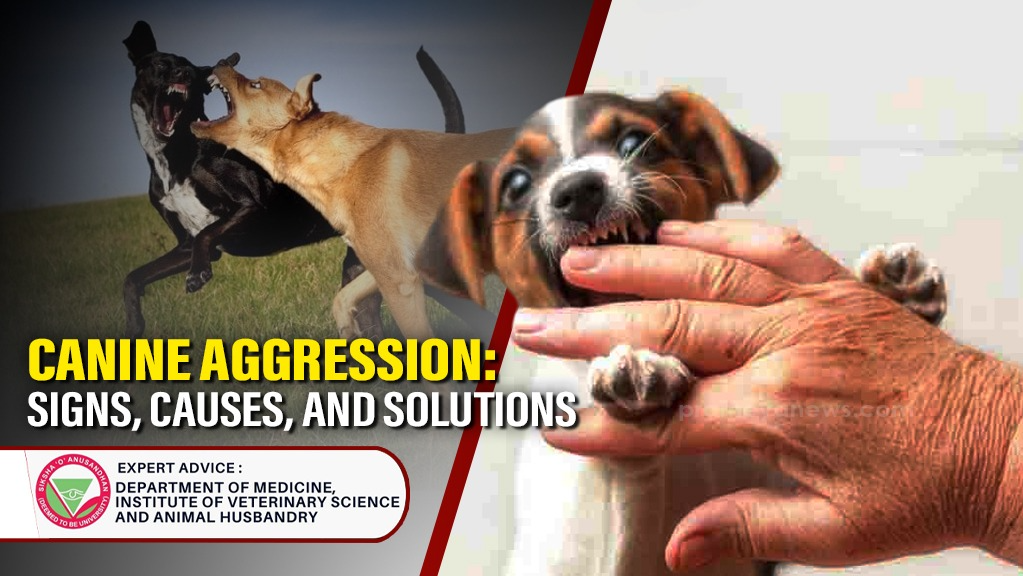Understanding the Complexities of Canine Aggression
Canine aggression, a behavior that can pose considerable risks to both animal well-being and public safety, has become an increasingly prominent concern in contemporary society. The roots of such behavior are often debated, with some perspectives tracing it back to the domestication process from wolves. However, aggression in today's dogs is understood to be a multifaceted issue, manifesting in various forms depending on the situation and underlying triggers. These can range from fear-related responses and possessiveness over resources to aggression during play, conflict-induced reactions, issues with other dogs, territorial defense, predatory instincts, pain or disease-induced irritability, and maternal protectiveness.
Understanding Different Manifestations and Triggers
Among the various types, certain forms of aggression warrant particular attention due to their potential severity.
- Predatory Aggression: While not typical, this can have life-threatening consequences, sometimes involving attacks on small children perceived as prey. A rare and extreme form, infantophagia, involves a dog attacking its own puppies.
- Pain or Disease-Related Aggression: Numerous health conditions can trigger or exacerbate aggressive tendencies. These include neurological diseases like rabies, distemper, toxoplasmosis, epilepsy, and brain tumors. Hormonal imbalances such as hypothyroidism or hyperadrenocorticism, as well as musculoskeletal disorders like arthritis, intervertebral disc diseases, or spinal injuries, can also lead to aggression due to pain or discomfort.
Key Factors Influencing Aggressive Behavior
A confluence of factors can contribute to or predispose a dog to aggressive behavior:
- Heredity: Genetic makeup plays a significant role. Certain breeds are often associated with a higher propensity for aggression, including Pit Bull Terriers, Rottweilers, German Shepherds, Doberman Pinschers, Akitas, and Cane Corsos. Conversely, breeds like Labrador Retrievers, Golden Retrievers, Beagles, Shih Tzus, and Pugs are generally considered more docile. Aggression levels can also vary between genders, with adult males often exhibiting more aggression than females. It's believed that multiple genes influence aggressive behavior, and mutations, particularly in serotonin metabolism-related genes (such as HTR1A, HTR1B, HTR2A, SLC6A4), are suspected culprits. Interestingly, the gene for coat color is sometimes found in close proximity to genes associated with dominance aggression.
- Nutrition: Diet can indirectly impact a dog's temperament. High-protein diets, for example, may lower serotonin levels by reducing the absorption of tryptophan (an amino acid precursor to serotonin), potentially leading to increased impulsivity. Deficiencies in essential nutrients like omega-3 fatty acids, B-complex vitamins, or certain minerals can impair brain function and heighten irritability. Feeding practices, such as free-feeding or situations involving competition for food among dogs, can also trigger aggressive responses.
- Socialization: The importance of early and proper socialization cannot be overstated. Puppies exposed to a diverse range of people, other animals, and various environments between the critical ages of 3 to 14 weeks are more likely to develop into well-adjusted, confident adult dogs. A lack of adequate socialization during this formative period can lead to fear-based or unpredictable aggression later in life. It's also crucial to note that punishment-based training methods or the use of aversive tools like shock or prong collars can induce stress and may worsen aggression, making them unsuitable for long-term behavioral correction.
- Past Experiences: Traumatic past experiences, including abuse, neglect, abandonment, or inconsistent handling, can significantly increase the likelihood of a dog developing fear-based aggression. Such defensive behaviors are often rooted in a deep sense of mistrust and insecurity.
Recognizing the Warning Signs
Dogs on the verge of exhibiting aggression often display specific body language cues. These warning signs can include intense staring, a lowered head with a forward lean, flattened ears, a wrinkled muzzle, raised lips revealing teeth, prominent or "whale" eyes (showing the whites of the eyes), and an upright, stiff tail. Recognizing these signals early can be crucial in preventing an escalation.
Regulatory Measures and Legal Framework in India
The Indian government has taken steps to address concerns over dog aggression. A notification from the Ministry of Fisheries, Animal Husbandry & Dairying dated March 12, 2024, proposed a ban on the import, breeding, and sale of specific dog breeds deemed "dangerous" following a rise in fatal bite incidents. This decision was informed by public input and a directive from the Delhi High Court. The list includes breeds such as Pitbull Terrier, Rottweiler, Dogo Argentino, Cane Corso, and others, along with their crossbreeds.
Several legal provisions and guidelines also regulate dog behavior and ownership:
- The Prevention of Cruelty to Animals Act, 1960, mandates humane handling, stipulating that aggression is not a justifiable reason for cruelty.
- The Animal Birth Control (ABC) Rules, 2023, require that stray aggressive dogs be humanely captured, sterilized, vaccinated, and, unless deemed unfit, released.
- Animal Welfare Board of India (AWBI) guidelines emphasize behavioral correction strategies over outright breed bans and promote responsible pet ownership and training.
- Municipal rules often enforce dog registration, leashing, muzzling in public spaces, and establish owner accountability.
- Legally, owners can be held liable under Indian Penal Code (IPC) Section 289 for injuries caused by their aggressive pets.
Implementation guidelines for the proposed breed ban include prohibiting new licenses for breeding, import, or sale of these breeds and mandating the sterilization of existing pets of these breeds.
Strategies for Management and Prevention
While aggression can be a natural behavior in animals, managing it in domestic dogs involves a multifaceted approach. Given that even apparently healthy aggressive dogs can bite, leading to public health concerns such as the need for anti-rabies vaccinations for victims, effective management is paramount.
Key strategies include:
- Selective Breeding: Carefully selecting dogs for breeding based on temperament can help reduce or potentially eliminate aggressive traits over generations.
- Veterinary Intervention: This may include medication in some cases to help manage anxiety or underlying conditions contributing to aggression.
- Behavioral Modification and Training: Professional training using positive reinforcement techniques is essential.
- Physical Exercise and Mental Stimulation: Adequate exercise and mental enrichment can help reduce stress and pent-up energy that might contribute to aggression.
- Proper Nutrition: Ensuring a balanced diet appropriate for the dog's age, breed, and activity level.
- Neutering/Spaying: This can sometimes help reduce certain types of aggression, particularly hormone-related ones.
- Responsible Ownership: This includes understanding a chosen breed's characteristics, providing consistent handling, and avoiding situations that may trigger aggression. It is generally advisable to avoid high-energy or potentially aggressive breeds in homes with young children or for inexperienced handlers. Opting for temperament-tested, well-socialized dogs is always recommended.
Consulting with veterinarians and qualified animal behaviorists is crucial for developing the best solutions tailored to an individual dog's specific aggression issues. Ultimately, fostering a society where humans and dogs can coexist safely and harmoniously requires a collective effort involving responsible breeding, diligent ownership, comprehensive socialization, and effective regulatory oversight.
With inputs from Dr. Varun Kumar Sarkar, MVSc, PhD and Dr. Ritu Gupta, MVSc. Assistant Professors in Veterinary Medicine, Institute of Veterinary Science and Animal Husbandry, SOA Deemed University, Bhubaneswar.

